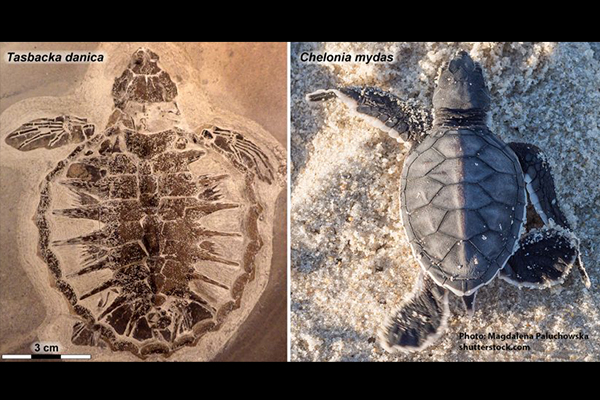
Full Text:
Researchers from North Carolina State University, Lund University in Sweden and the University of Hyogo in Japan have retrieved original pigment, beta-keratin and muscle proteins from a 54 million-year-old sea turtle hatchling. The work adds to the growing body of evidence supporting persistence of original molecules over millions of years and also provides direct evidence that a pigment-based survival trait common to modern sea turtles evolved at least 54 million years ago.
Tasbacka danica is a species of sea turtle that lived during the Eocene period, between 56 and 34 million years ago. In 2008, an extremely well-preserved T. danica hatchling was recovered from the Für formation in Jutland, Denmark. The shells of modern sea turtle hatchlings are dark colored--this pigmentation gives them protection from aerial predators (such as seagulls) as they float on the ocean surface to breathe. The T. danica hatchling specimen appeared to share this coloration with its living counterparts. According to the study’s co-author, the findings suggest "that coloration was used for physiology as far back as the Eocene, in the same manner as it is today."Image credit: Johan Lindgren